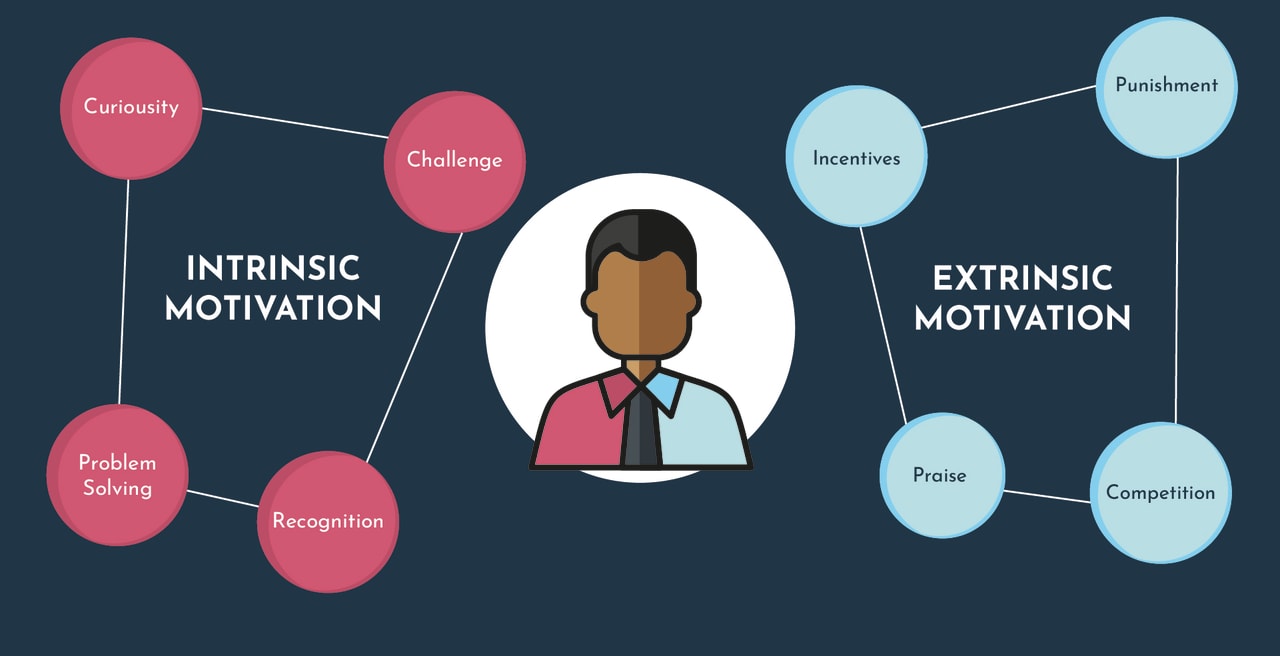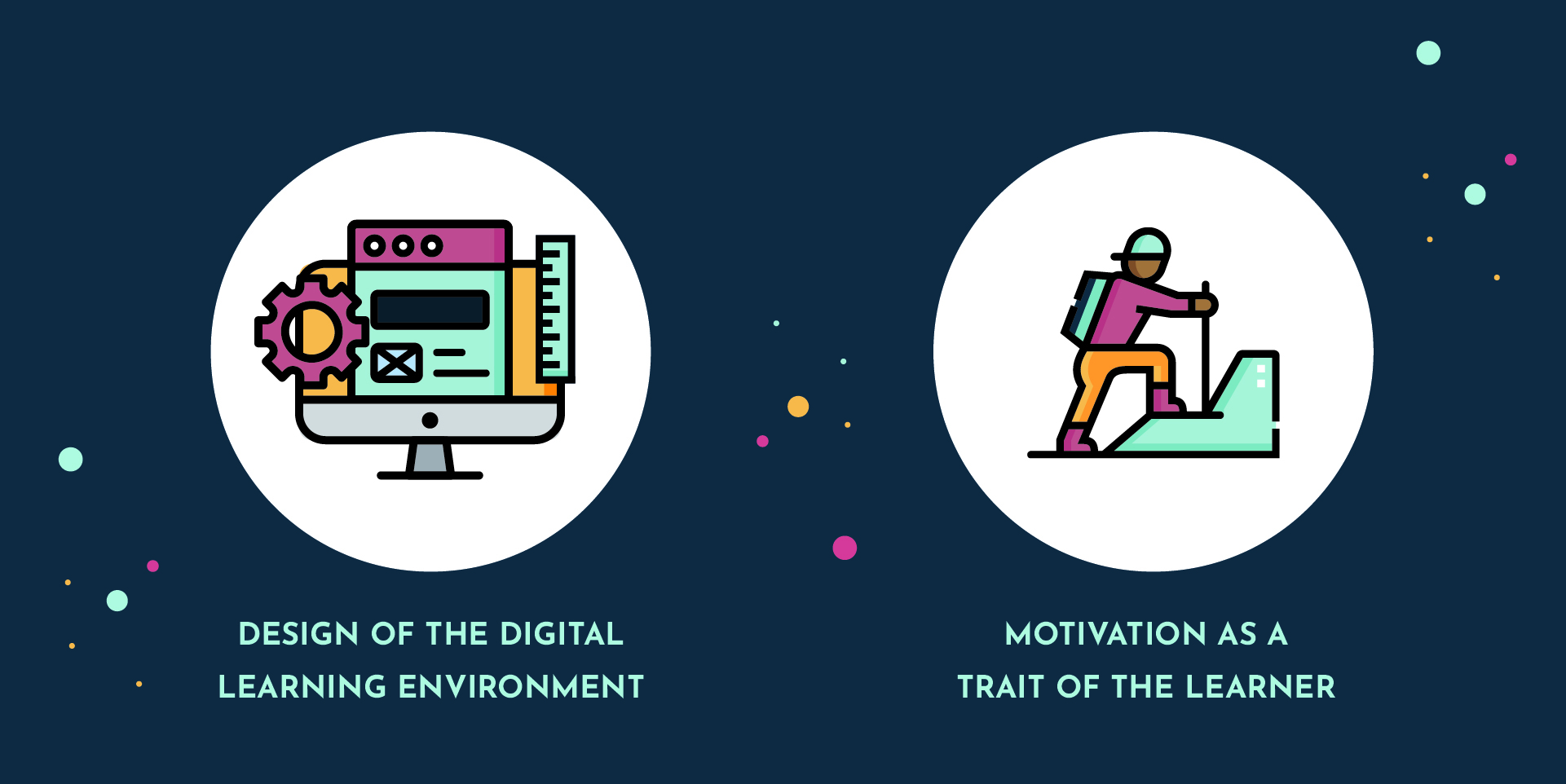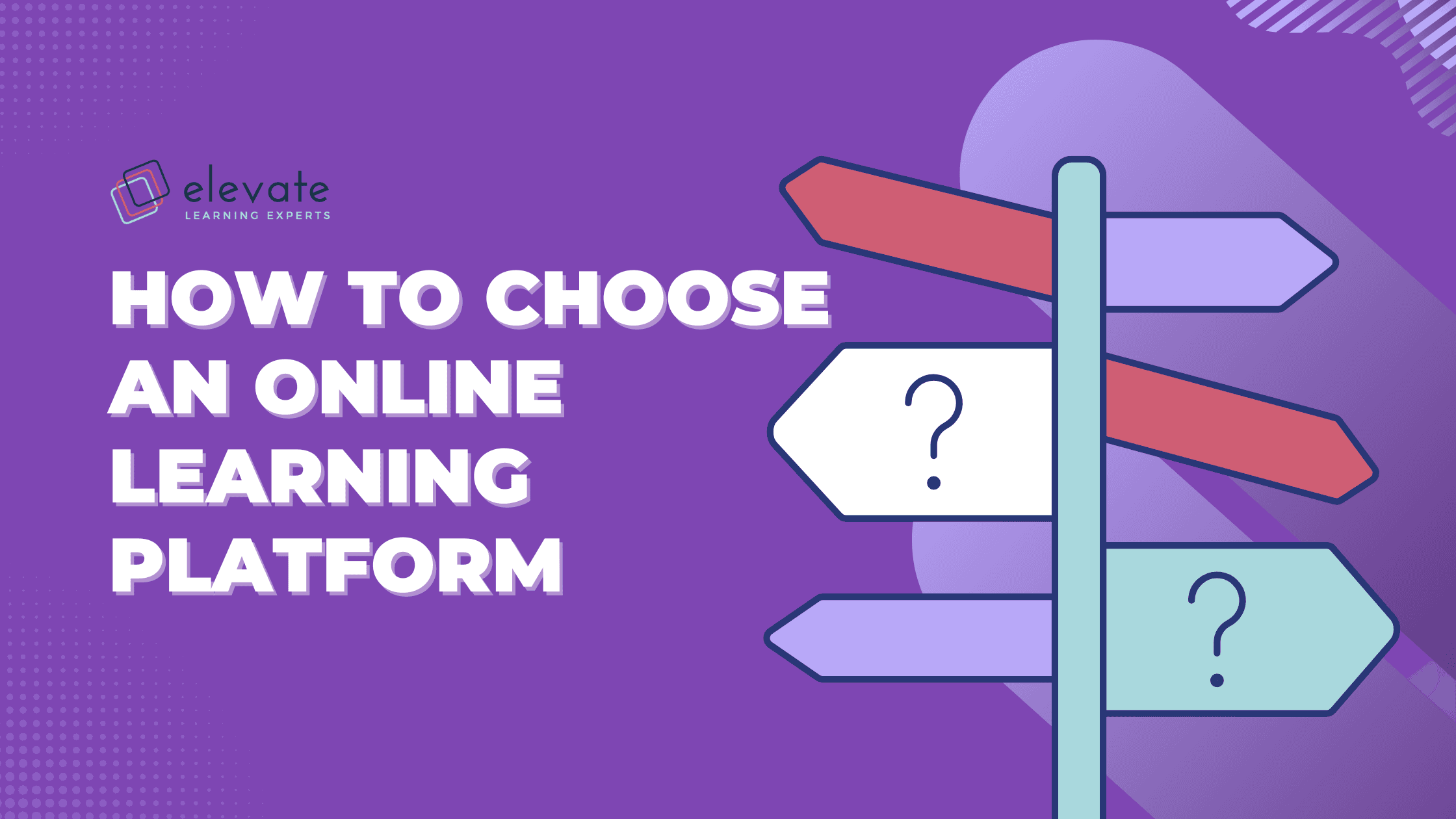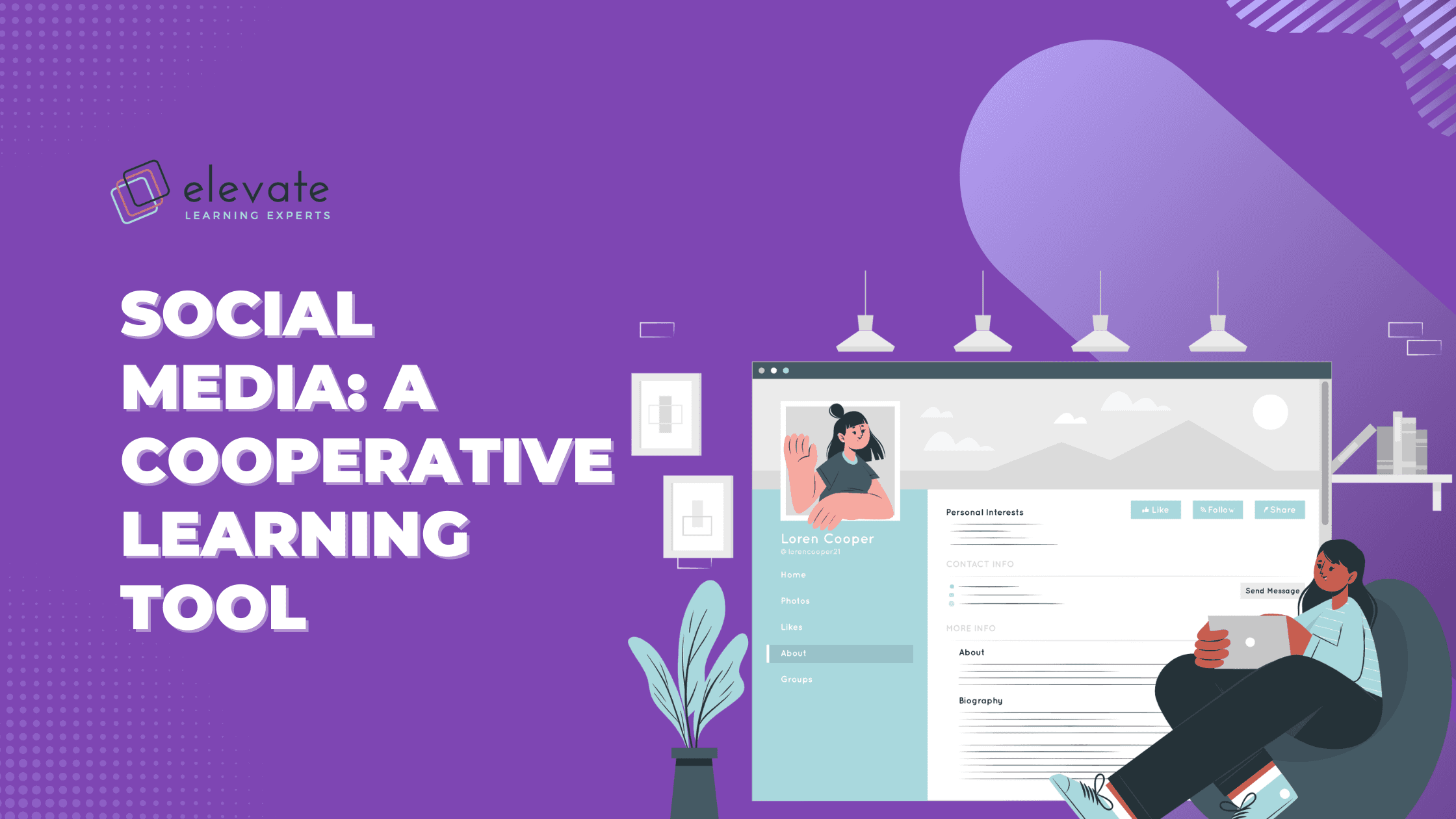When we’re feeling motivated, we are able to find time to dedicate to learning new skills, changing habits or behaviours, to being more productive, and ultimately to achieving our goals.
This idea of motivation as a deep-rooted, non-cognitive trait has long been considered the engine of learning. Research has shown that motivated learners are more inclined to participate in challenging activities, enjoy adopting a deeper approach to learning, being actively engaged, as well as showcasing great academic performance, creativity and persistence (Harnett, 2016). But, there are a variety of factors which have an impact on an individual’s motivation, and this affects how we learn, what we learn and when we choose to learn.
There are two main classifications of motivation, namely intrinsic motivation and extrinsic motivation (El-Seoud, Mohamed & Taj-Eddin, 2016). Intrinsic motivation occurs when an individual performs a task for their own inherent satisfaction. Extrinsic motivation occurs when an individual performs a task in order to receive an immediate external gain externally. Characteristics associated with intrinsic motivation are independence and self-direction which is why intrinsic motivation is such an important component in online learners.

In fact, findings drawn from comparative studies between on-campus learners and online learners suggest that online learners are naturally more intrinsically motivated when compared to their on-campus peers, both at a postgraduate and undergraduate level (Harnett, 2016). This is because the digital learning environment requires learners to display characteristics similar to those needed to be intrinsically motivated - such as self-regulation and curiosity - in order to have a successful learning experience. Interestingly, online learning experience design, when done well, strategically fosters intrinsic motivation due to the fact that it provides opportunities for curiosity, challenge, fantasy and novelty.

This is why motivation plays such a critical role in the design and delivery of digital learning experiences, and it’s where the science and art of learning intersect.
Perspectives on Motivation in a Digital Classroom
There are two prominent perspectives when discussing motivation to learn in an online environment. The first perspective focuses on the design of the digital learning environment in order to elicit student motivation. The second perspective looks at motivation as a trait of the learner.

We’ve covered a range of tactics for designing a learning environment that keeps learners engaged and motivated in previous articles, including gamification, microlearning, and creating opportunities for learners to become better learners. Frameworks such as those we outline in our Learning Experience Design Essentials course, and trends in user experience and user interface design, also help learning designers create more intrinsically motivating learning environments and learning experiences that tap into the motivation of a learner.
But if the past almost two years has shown us anything, it’s that digital fatigue has increasingly entrenched itself as part of the online learning lexicon, which means we need to critically assess how we use digital tactics to engage and motivate learners, based on their learning preferences.
Investigations centred around learner motivation in an online environment are guided by well-established theories of motivation, with self-efficacy theory being the most prominent. Social cognitive theory presents the idea that motivation has a major impact on performance and learning. It focuses on how people obtain skills, knowledge and beliefs through their interactions with others and is built on the idea that there’s a reciprocal relationship between environmental influences, personal factors and behaviours.
An important aspect of this theory is the concept of self-efficacy. This is defined as the belief that one is capable of learning in order to achieve goals, and has the confidence in their ability to self-motivate as required (Bandura, 1997). It’s focused on an individual’s beliefs about their performance capabilities and has been shown to be a prominent predictor of successful outcomes and satisfaction in digital learning environments.
However, as our understanding of how people learn online matures, we realise that motivation alone is not enough.
When in Doubt, Grit
Online learning, for the most part, requires learners to be self-directed in order to succeed, but those who lack self-regulation and discipline can quickly lose that motivation. This is where grit can help.
In her 2007 research and subsequent 2013 TedTalk on the power of passion and perseverance, Angela Duckworth, defines grit as the persistent long-term pursuit of achieving goals, despite facing setbacks or obstacles. And much like intrinsic motivation, grit is most commonly associated with discipline, self-regulation, dutifulness, resilience and low-impulsivity, all of which are vital for online learning success. It’s a skillset linked to lifelong learning and academic achievement and attainment, with studies showing grit to be a predictor of overall success.
Here are three ways in which grit can be developed through the learning design process:

Deliberate practice is the intentional and sustained efforts to work on developing new competencies. It’s not just practicing the same repetitive exercises over and over, but rather, it’s the steady improvement and extension of a range of skills (Ericsson, Prietula & Cokely, 2007). As learning designers, if we want learners to develop both grit and new competencies, we have to create opportunities for them to put their new or emerging skills into practice.
You can create opportunities for deliberate practice simply through prompts or pause and reflect questions, or by sharing templates or activities and exercises for learners to complete offline.

Allowing students to learn from their mistakes is fundamental to the development of grit. While delivering a course means you’re not always able to provide individualised coaching, there are ways to share feedback.
You can create opportunities to provide feedback by implementing social learning elements in your learning environment. This could be through encouraging learning buddies, creating discussion boards or groups for sharing ideas, activities or feedback. Additionally, sharing model answers and detailed explainers or completed templates can also guide and help learners to learn from their deliberate practice activities.

Learners can sometimes feel overwhelmed by a digital learning experience, especially if they are not used to learning online or if the subject matter is technically challenging. In structuring learning into chunks, with clear direction as to what is expected of the learner at each stage, learning designers can help to manage cognitive overload and allow the learners to focus on the learning to be done.
You can do this by creating competence-based learning outcomes, structuring your content into small, microlearning chunks, and scaffolding your content so that learners can progress sequentially and logically through the learning experience.
Motivation & Grit: A Recipe for Digital Learning Success

Needless to say, motivation and grit in learning are crucial for a successful learning experience, and it’s important for learning designers to understand the science and art of designing digital learning experiences that breed motivation and help learners to stay the course.
References
Buzzetto-Hollywood, N., Hill, A., Quinn, K.A. & Wang, W. (2019). Grit in Online Education. Journal of Education, Society and Behavioural Science. 30(4), pp. 1-11.
Duckworth, A.L., Peterson, C., Matthews, M.D., & Kelly, D.R. (2007). Grit: Perseverance and Passion for Long-Term Goals. Journal of Personality and Social Psychology. 92(6), pp. 1087–1101.
El-Seoud, S.A., Mohamed, M. & Taj-Eddin, I. (2016). International Journal and Teaching: Motivation in E-Learning: How do we keep learners motivated in an E-learning environment? Egypt.
Ericsson, A.K., Prietula, M.J., Cokely, E.T. (2007). The Making of an Expert. Available at: https://hbr.org/2007/07/the-making-of-an-expert
Hartnett, M. (2016). The Importance of Motivation in Online Learning. In: Motivation in Online Education. Springer, Singapore. https://doi.org/10.1007/978-981-10-0700-2_2
McClendon, C.,Massey Neugebauer, R. & King, A. (2017). Grit, Growth Mindset and Deliberate Practice in Online Learning. Journal of Instructional Research. 6(1027), pp. 8 - 17.

